
views
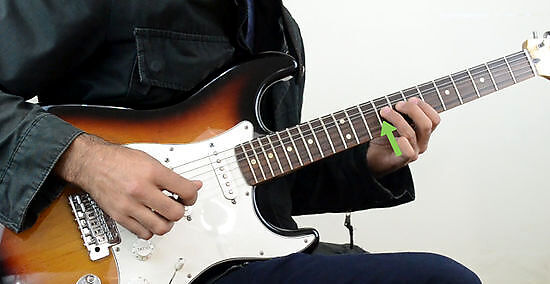
Familiarize yourself with some of the essential guitar techniques for soloing. These techniques are simple enough by themselves, but mastering them and being able to effortlessly integrate them is crucial to be able to solo well. Some of these techniques include bends, hammer-ons, pull-offs, vibrato, and double stops. A bend is accomplished by bending a guitar string to raise its pitch. To play a bend, fret a string with your ring finger, and place your pointer and middle fingers on the frets just behind it. Exerting pressure with all 3 fingers, push the string up or down against the neck and allow its pitch to rise. You can achieve either a half step or a full step difference in pitch. A hammer-on is accomplished by playing a second note with only your fretting hand. To play a hammer-on, fret a string with your pointer finger and pluck the string. After plucking the string, forcefully fret the note a full step above this note with your ring finger, but do not pluck the string. A pull-off is the analog to the hammer-on. To play a pull-off, fret a string with your ring finger and pluck the string. After plucking the string, pull your ring finger off the fretboard, keeping your index finger fretted a full step below. Pull-offs and hammer-ons can be used to increase your solo's speed, because you don't need to pluck each note separately. A vibrato occurs when a sustained note is allowed to pulsate in pitch. To play a vibrato, fret a string with your pointer finger and pluck the note. Allow the note to ring, all the while jiggling your pointer finger back and forth on the fretboard. This will cause the note to pulsate regularly between being in tune and slightly sharp. A double stop occurs when you play 2 notes at the same time during a solo. Simply put, a double stop is a chord. Fret and pluck both strings just as you would when playing a chord sequence.
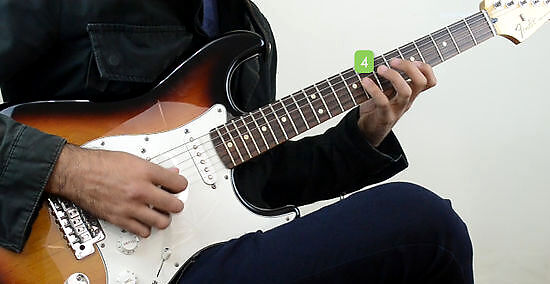
Learn the pentatonic scale. The pentatonic scale is a scale with only 5 notes per octave, in contrast to the typical 7 notes. Removing the 2 notes from the diatonic scale creates a scale with no dissonant intervals (there are no minor seconds or diminished fifths), and as such the pentatonic scale has become the quintessential scale for guitar soloing. You will want to become familiar with the scale at all positions along the guitar's neck. The major pentatonic scale is produced by playing the first, second, third, fifth, and sixth degrees of the major scale. In C major, the pentatonic scale would be: C, D, E, G, A. The minor pentatonic scale is produced by playing the first, third, fourth, fifth, and seventh degrees of the minor scale. In C minor, the pentatonic scale would be: C, E-flat, F, G, B-flat. The pentatonic scale that you use as a framework for your solo should match the key of the song. The minor blues pentatonic scale is produced by playing the first, third, fourth, flatted fifth, and seventh degrees of the blues minor scale. In C minor, the pentatonic scale would be: C, E-flat, F, G-flat, G, B-flat.
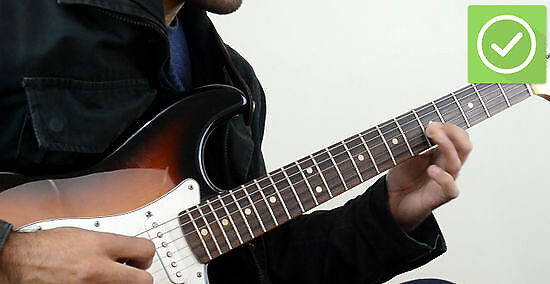
Integrate the basic soloing techniques into the pentatonic scale. Play up and down the pentatonic scale, employing techniques like bends and hammer-ons. This provides the basic framework for guitar soloing in virtually all styles of music.
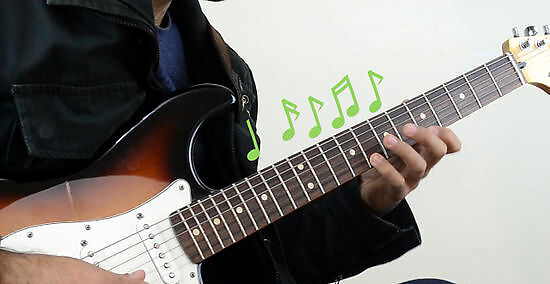
Vary your rhythms. As you begin to play through the pentatonic scale using various techniques, make sure to vary your rhythmic structures. Strive for a balance between fast, technically precise passages (using sixteenth-notes for example) and slow, lyrically expressive passages (using half or whole notes, for example).

Pay attention to the underlying chord sequence. As you become comfortable with soloing, start to pay more attention to what your rhythm section is playing. Remember that the notes you are playing will sound different based on their relationships with the underlying chord. If the rhythm section is playing a C major chord, for example, playing a C or G will sound very consonant (meaning it will mesh well), while playing an F-sharp will clash and sound dissonant. Strive for a balance between consonance and dissonance.















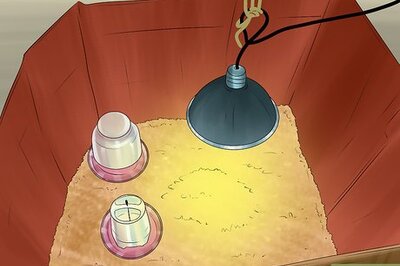




Comments
0 comment